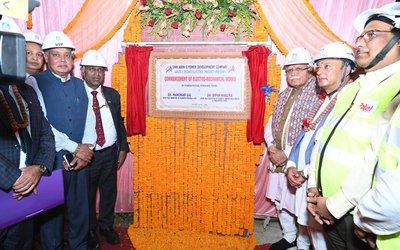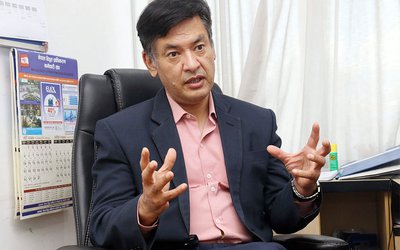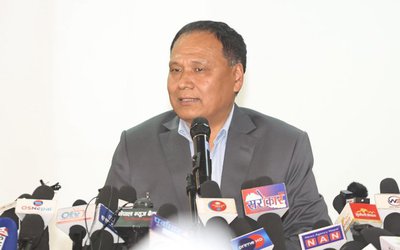
With all good intention, Finance Minister Dr. Ram Sharan Mahat and his team in the ministry have sent Nepal’s new Foreign Aid Policy to the cabinet for approval. However, the terms and conditions spelled out in the policy are likely to increase the gap between the donors and the recipient country, that is, Nepal.
The words used on conditionality include the ceiling for aid, conditions for loans and grants and TA, with some dual meanings and contradictions within the documents. Nepal’s development partners have already conveyed their reservation about the document through various channels.
“The conditions laid down in the document, particularly on the needs of vehicles and other equipment, including the hiring of consultants, are ridiculous. One cannot drive a Maruti car on remote roads near power construction projects. There will be the need of high-power cars to drive on rough roads. Similarly, hiring of the consultants depends on the situation. If there is a need of highly skillful consultants for the project, the cost will be high,” said a donor representative on condition of anonymity. "Your government has every right to prepare the foreign aid policy as per their wishes. We cannot say anything even if they completely discard foreign aid.”
As in the earlier directives of Chief Secretary, the new foreign aid policy is full of nitty-gritty and details, including what kinds of vehicles or computers and consultants the project will need to hire. Obviously, there are terms for loans, grants and technical assistance.
“This is the best document the government has ever produced following intensive discussions for almost five years,” said joint secretary and head of International Economic Cooperation Division Madhu Marasini. (See Interview) “We shared the documents in all the stages of discussion with all our development partners with a view to make transparency a hallmark in foreign aid.”
Although the new foreign aid policy was prepared to increase aid effectiveness as proposed by Nepal’s donors and partners, the proposed foreign aid document has angered almost all multilateral and bilateral donors in Nepal. With the experience of having always maintained good relations and having had a very good reputation among Nepal’s major development partners, finance minister Dr. Ram Sharan Mahat can make a difference in the relations in aid quality terms.
Representatives of development partners do not agree. “What is the sense in sharing the document when they discard our suggestions and advice? If the document comes out as it is, it will have a major setback for Nepal in the long run,” said a donor representative. “We just want to know whether Nepal wants foreign aid or not? If it wants foreign aid, it should also respect the voices of the donor countries.”
As Nepal’s capacity to allocate funds for the development expenditure is shrinking due to growing demand of resources in concurrent expenditure, Nepal dependence on foreign aid is also growing. As Nepal has already made it clear that it wants to graduate from its LDC status to the status of developing countries by 2022, it needs foreign support to expand its infrastructure. However, there will be more difficulty in the coming days given the current controversies coming between the donor and recipient.
According to Development Cooperation Report 2012-2013, the total volume of aid disbursement for Fiscal Year 2012-013 was US$ 959 million of which 49 percent was contributed by multilateral donors and 51 percent by bilateral donors. The amount was distributed for 508 different projects. The disbursement covered both the on-budget and off budget projects.
The reports state that the amount did not cover the core funding delivered by INGOs. Similarly, 61 percent of the aid was delivered as grant, 21 percent as TA and 18 percent as loan assistance. The World Bank, Asian Development Bank and UN Groups had provided higher amount of assistance among multilateral donors while the UK, the USA, Japan, India and Switzerland had provided the highest amount among the bilateral donors during the period.
Finance ministry agrees that Nepal has been receiving external resources for over six decades and aid continues to play an important role in her socio-economic development. External aid represents about 22 percent of the national budget for FY 2013-014 and these resources meet most of the development expenditure.
Given the present uneasy relations developed during the process of formulation of Nepal’s Foreign Aid Policy remains, it will affect the development projects currently proposed and in the process of implementation.

Keshab Poudel
Poudel is the editor of New Spotlight Magazine.
- KUL MAN GHISING: Bowing Down To The People
- Apr 13, 2025
- POLITICAL VIOLENCE: Culture of Impunity
- Apr 11, 2025
- PM OLI MEETS PM MODI: No Progress
- Apr 09, 2025
- PM OLI’S THAILAND VISIT: Flip Flop
- Apr 08, 2025
- FM Dr. Deuba’s India Visit: Mission Aborted
- Mar 26, 2025















